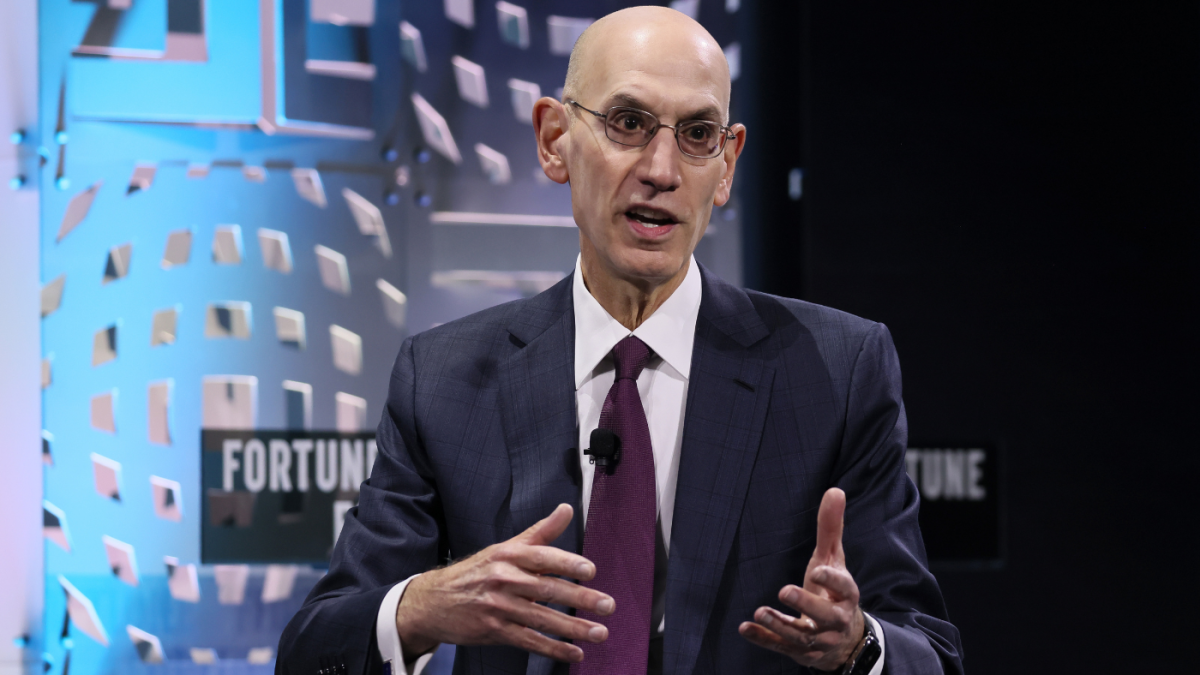The defining story of the 2024-25 NBA season has been fan pushback against the league’s 3-point-heavy shot diets. The long ball is hardly a new phenomenon, as 3-point rates have been steadily increasing for two decades, but this season, 41.4% of all NBA shots are coming from behind the arc.
The Boston Celtics just won a championship primarily thanks to their shooting, and they are set to become the first team in NBA history to attempt more 3s than 2s over a full season. While fans marveled at the 3-point revolution at first, many have grown weary of the dominance that a single shot now seems to have over the league as a whole. While fans don’t want to abandon the 3-pointer entirely, there has been a clamoring for more balance in the types of shots teams take.
This frustration has extended beyond just fans and has become a talking point among the league’s most important figures. LeBron James grumbled that “there’s a lot of f—ing 3s being shot” in a wider quote about the state of the league back in December. NBA commissioner Adam Silver also acknowledged that the league is aware of the fan concerns and will take take them into account as it attempts to address the state of offense from a rules perspective.
But his statements in the past represented only acknowledgment. On a Wednesday appearance on The Herd with Colin Cowherd, he took things a step further and made it clear that the league is seriously considering substantial changes.
“As stewards of the game, Joe Dumars leads our competition committee here, we will tweak it, we will correct those issues,” Silver said.
Silver also called changes to league-wide playing styles “doable,” but it was part of a longer, broader answer about offensive playing styles.
“What do we do to change it? I agree to the extent that you start to see very similar offenses around the league. Teams have brands, teams have identities, Joe Dumars is a colleague now at the league office, the Bad Boys, etc… the Showtime Lakers. So, I recognize that to the extent that offenses start to look very similar, we lose that.
“At the same time, the league is going through a transformation. Just as you said, players like Victor Wembanyama, players like [Nikola] Jokic, are doing things that big men never did historically. It wasn’t that long ago, Colin, you remember conversations you had with David Stern, you would bemoan lack of skill among some players, there was a sense that there was too much physicality around the game. That the play under the basket, that you would have the hack-a-Shaq era, there were big men that couldn’t shoot free throws. There are no big men anymore that can’t shoot free throws, just as one comparable from one generation to another.
“So I think we’ve just gotta be careful. The one thing we don’t want to do is, I don’t want to just kneejerk move the 3-point line. We’re sort of going through a process now, seeing how these players are adapting to the new rules, and figuring out what changes we should make. To be honest, I wish it was as simple as just moving the 3-point line back, because then we would just do it. Part of the concern from the basketball folks is that if you move the 3-point line back, you’ll end up just sort of clogging up the area under the basket, and that’s not such attractive basketball either.”
That last point is important, not just in itself, but as part of this overall conversation. Any rule change, however small, has unintended consequences. Moving the 3-point line back, as an example, wouldn’t just result in fewer 3-pointers. It would change the entire geometry of the basketball court and fundamentally alter the terms under which the game would be played.
This is a topic I’ve written about extensively. In December, I covered 12 of the most popular ideas that have been suggested to limit 3-point volume and what sort of impact those changes would have on the sport as a whole. None of those ideas are a perfect. They’d all change more than just shot selection.
The two things that became clear in the Cowherd interview, though, were that Silver understands that this problem exists, and that the league is considering a variety of options to address it, but nothing has been settled yet. That represents progress.
The NBA sees what concerned fans see and wants to fix it. It’s just going to take a lot of time, a lot of research and a lot of testing to figure out how exactly to do that.

